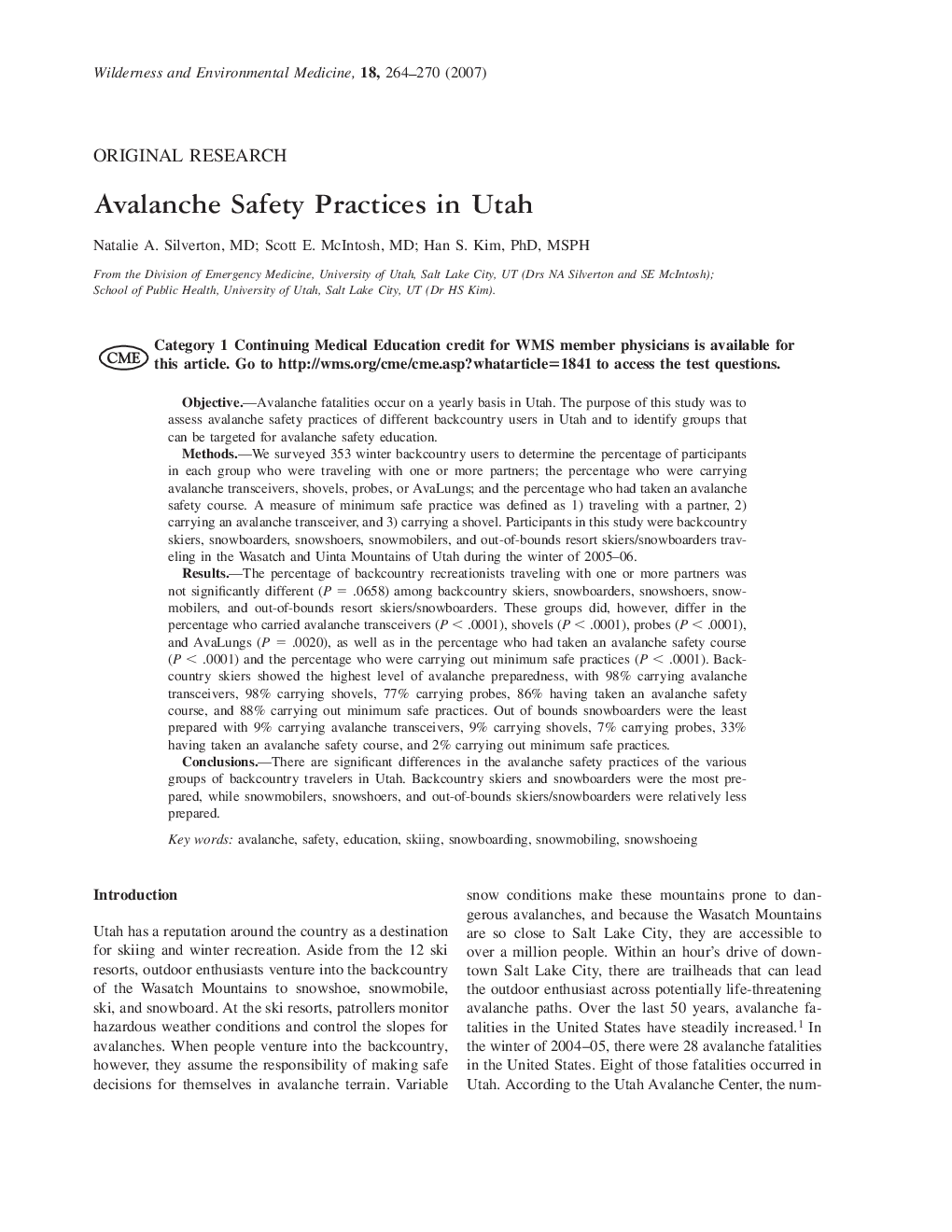| کد مقاله | کد نشریه | سال انتشار | مقاله انگلیسی | نسخه تمام متن |
|---|---|---|---|---|
| 2615409 | 1135088 | 2007 | 7 صفحه PDF | دانلود رایگان |

Category 1 Continuing Medical Education credit for WMS member physicians is available for this article. Go to http://wms.org/cme/cme.asp?whatarticle=1841 to access the test questionsObjectiveAvalanche fatalities occur on a yearly basis in Utah. The purpose of this study was to assess avalanche safety practices of different backcountry users in Utah and to identify groups that can be targeted for avalanche safety education.MethodsWe surveyed 353 winter backcountry users to determine the percentage of participants in each group who were traveling with one or more partners; the percentage who were carrying avalanche transceivers, shovels, probes, or AvaLungs; and the percentage who had taken an avalanche safety course. A measure of minimum safe practice was defined as 1) traveling with a partner, 2) carrying an avalanche transceiver, and 3) carrying a shovel. Participants in this study were backcountry skiers, snowboarders, snowshoers, snowmobilers, and out-of-bounds resort skiers/snowboarders traveling in the Wasatch and Uinta Mountains of Utah during the winter of 2005–06.ResultsThe percentage of backcountry recreationists traveling with one or more partners was not significantly different (P = .0658) among backcountry skiers, snowboarders, snowshoers, snowmobilers, and out-of-bounds resort skiers/snowboarders. These groups did, however, differ in the percentage who carried avalanche transceivers (P < .0001), shovels (P < .0001), probes (P < .0001), and AvaLungs (P = .0020), as well as in the percentage who had taken an avalanche safety course (P < .0001) and the percentage who were carrying out minimum safe practices (P < .0001). Backcountry skiers showed the highest level of avalanche preparedness, with 98% carrying avalanche transceivers, 98% carrying shovels, 77% carrying probes, 86% having taken an avalanche safety course, and 88% carrying out minimum safe practices. Out of bounds snowboarders were the least prepared with 9% carrying avalanche transceivers, 9% carrying shovels, 7% carrying probes, 33% having taken an avalanche safety course, and 2% carrying out minimum safe practices.ConclusionsThere are significant differences in the avalanche safety practices of the various groups of backcountry travelers in Utah. Backcountry skiers and snowboarders were the most prepared, while snowmobilers, snowshoers, and out-of-bounds skiers/snowboarders were relatively less prepared.
Journal: Wilderness & Environmental Medicine - Volume 18, Issue 4, December 2007, Pages 264–270